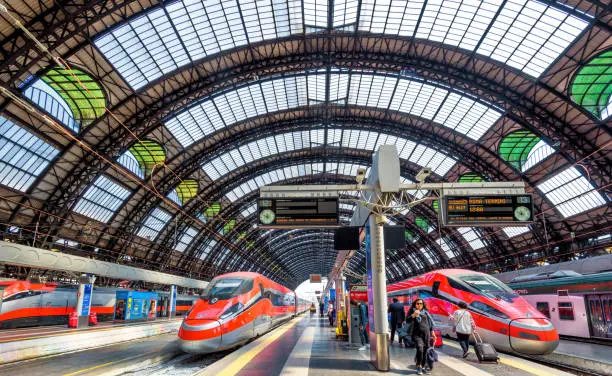As demand for rail travel surges, Europe is witnessing a significant expansion of its high-speed train networks, with projections indicating that passenger use could double in the next five years.
Recent statistics show that passenger rail traffic within the EU increased by 50% between 2021 and 2022, fueling the development of high-speed rail lines across the continent. Notably, on the day of the Paris Olympics opening ceremony, the French state rail company SNCF faced sabotage attempts that targeted major high-speed lines, highlighting the crucial role of rail networks in France.
Europe is currently experiencing a renaissance in rail travel. The introduction of a new line from Paris to Bordeaux in 2017 significantly reduced travel times, and six additional projects are in the pipeline to further expand the TGV network, including the Bordeaux-Toulouse extension, expected to open in 2032. This year will also see the start of construction on a high-speed line between Porto and Lisbon in Portugal, with the initial 89-mile segment slated for completion by 2028.
In Spain, which boasts nearly 2,500 miles of high-speed track—the second-largest network globally—two new lines have opened in the past three years. The number of high-speed train passengers in Spain reached 23.7 million in 2022, marking a 76% increase from the previous year.
The Czech Republic is also planning a rail revolution, with the government set to launch six new high-speed lines connecting major cities and integrating into the broader European network. Construction is expected to commence in 2026. Additionally, a new line connecting Budapest to Belgrade, as well as a route linking Athens Airport to Patras, is underway.
“There’s been a really big focus on high-speed networks,” said Christian Wolmar, a rail expert. “Massive investments have led to significant improvements in fast services, although some existing networks have seen neglect.”
Looking ahead, EU officials have ambitious plans to double high-speed rail use by 2030 and triple passenger numbers by 2050. In 2022, the EU allocated €5.4 billion (£4.6 billion) to 135 transport projects to support these initiatives, with an additional €7 billion (£6 billion) pledged this July to enhance rail infrastructure as part of the Trans-European transport network (TEN-T), which encompasses roads, rail, shipping, and aviation.
Related Topics:
10 Things to Do in New York in December
5 Things to Do in Sunset Park ,Brooklyn
6 Things to Do in Clinton Hill, Brooklyn

